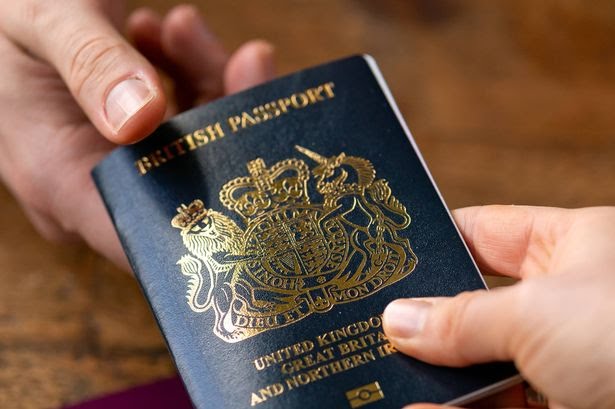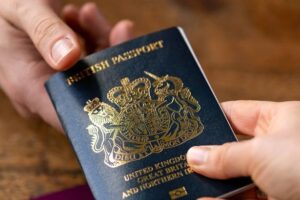
Indefinite Leave to Remain (ILR) in the UK: A Complete Guide
- Foreign News
- 23.09.2025
- No Comment
- 115
What Is Indefinite Leave to Remain (ILR)?
Indefinite Leave to Remain (ILR) is the UK’s form of permanent residency, allowing foreign nationals to live and work in the United Kingdom without time restrictions. Once granted, ILR holders can stay in the UK indefinitely, access public services, and eventually apply for British citizenship if they meet eligibility criteria. For many migrants, ILR represents the final stage of their immigration
Benefits of Indefinite Leave to Remain
- Freedom to live and work anywhere in the UK without visa restrictions.
- Access to public funds and certain benefits (subject to eligibility).
- Reduced immigration paperwork and costs in the long term.
- Ability to travel in and out of the UK more easily.
- Eligibility to apply for British citizenship after 12 months of holding ILR (or immediately for some spouses of British citizens).

Eligibility Criteria for ILR
The eligibility for Indefinite Leave to Remain depends on your immigration category and time spent legally in the UK. Key requirements include:
- Continuous lawful residence: Most applicants must have lived in the UK for at least 5 years under a qualifying visa (such as Skilled Worker, Global Talent, or Spouse Visa). Some categories require 10 years of lawful residence.
- Absence limits: Applicants should not have spent more than 180 days outside the UK in any 12-month period during their qualifying stay.
- Life in the UK Test: A mandatory test assessing knowledge of British history, culture, and values.
- English language proficiency: Applicants must demonstrate English proficiency through an approved test or by holding a degree taught in English.
- Good character requirement: No serious criminal convictions or breaches of immigration law.

How to Apply for Indefinite Leave to Remain
The ILR application process is completed online via the official UK Government website. Below is a step-by-step guide:
Step 1: Check Eligibility
Before applying, ensure that you meet the residency period, absence limits, and other requirements relevant to your visa category.
Step 2: Gather Required Documents
Prepare your passport, current visa or biometric residence permit, proof of lawful residence, financial records, Life in the UK test pass certificate, and English language evidence.
Step 3: Complete the Online Form
Submit your ILR application online through the official UK Government ILR portal. The form will ask for your personal details, travel history, and supporting evidence.
Step 4: Pay the Application Fee
As of 2025, the ILR fee is £2,885 per applicant. Biometric enrolment and expedited processing may attract additional charges.
Step 5: Biometric Enrolment
You’ll be invited to a UK Visa and Citizenship Application Services (UKVCAS) centre to provide your fingerprints, photograph, and signature.
Step 6: Wait for a Decision
Standard ILR applications are usually processed within 6 months. Priority and super-priority services (available at extra cost) can deliver a decision within 5 working days or 24 hours respectively.
Documents Required for ILR Application
- Current passport and biometric residence permit.
- Proof of lawful residence (e.g., tenancy agreements, utility bills, payslips).
- Life in the UK test pass certificate.
- English language qualification or exemption proof.
- Travel records showing compliance with absence rules.
- Any additional documents required by your visa category.
Common Reasons for ILR Refusal
Applications may be refused if:
- Incorrect or incomplete forms are submitted.
- Absence limits are exceeded.
- Required documents are missing or invalid.
- The applicant has criminal convictions or immigration breaches.
In case of refusal, you may be able to appeal or reapply, depending on your circumstances.
ILR vs. British Citizenship
While ILR grants permanent residency rights, it is not the same as British citizenship. ILR holders remain nationals of their original countries but can apply for citizenship after 12 months of holding ILR (or immediately if married to a British citizen). Citizenship grants a British passport and full political rights, including voting in general elections.
Maintaining Your Indefinite Leave to Remain
ILR can lapse if you leave the UK for more than 2 continuous years (or 5 years if you have settled status under the EU Settlement Scheme). To preserve your status, you must maintain strong ties to the UK or apply for a Returning Resident visa if you plan to stay abroad for an extended period.
FAQ
1. How long does it take to get Indefinite Leave to Remain?
Most standard applications are processed within 6 months. Priority services can be faster for an additional fee.
2. Can I apply for ILR after 3 years?
Yes, some visa categories such as the Global Talent or Innovator Founder routes allow for ILR after 3 years, depending on achievements and endorsement.
3. Does ILR expire?
ILR itself does not expire, but it can be lost if you stay outside the UK for more than the permitted absence period. You may also need to renew your biometric residence permit if it expires.
4. Can my family apply with me?
Yes, eligible dependants such as spouses and children can usually apply for ILR alongside the main applicant if they meet residence requirements.
Indefinite Leave to Remain is a significant step towards permanent residency and eventual citizenship in the UK. By understanding the eligibility requirements, preparing documentation carefully, and applying on time, you can maximize your chances of success. Always use the official UK Government website or seek professional immigration advice to ensure you follow the most up-to-date guidance and fees.







